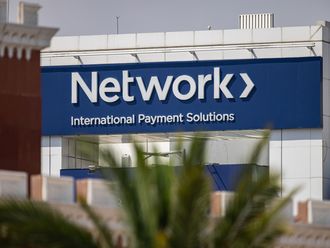Dubai: Robust economic and insurance premium growth, and relatively low exposure to natural calamities, makes the Middle East and North Africa (MENA) region an attractive destination for reinsurance business. However, fierce competition, pricing pressures and increasing retentions weigh heavily on the sector according MENA Reinsurance Barometer, an annual survey by the Qatar Financial Centre (QFC) Authority,
The survey showed that only 28 per cent of executives polled believe that reinsurance premium growth will outpace regional GDP growth over the next 12 months.
“Due to its compelling fundamentals and expanding capacity, the MENA region continues to be an attractive destination for global reinsurers,” said Shashank Srivastava, Chief Executive Officer and Board Member of the QFC Authority.
Executives believe rising competitive pressures in the industry makes it vulnerable to loosening of terms and conditions, ultimately exposing the industry to heightened risks. The tightening of terms and conditions slowed to a halt in the last 12 months, ending a trend, which started in 2011. The share of interviewees citing loose terms and conditions, against the five-year average, decreased from 38 per cent to 23 per cent
The percentage of participants expecting reinsurance capacity in the MENA region to expand further has increased sharply from 50 per cent to 80 per cent. The region remains an attractive high growth, low-catastrophe market with positive effects on overall portfolio diversification, in particular as global excess reinsurance capacity has continued to grow over the past 12 months.
Only 35 per cent of interviewees, down from 50 per cent in 2013, believe that the share of regional and Asian reinsurance capacity will increase at the expense of traditional Western capacity. This is driven by the abundance of global (Western) capacity and a series of Western reinsurers establishing local representation in the region.
Retention levels in the region remain low compared with other markets. On average domestic insurers in the MENA region cede 30 per cent of their premium income to reinsurers. However, 65 per cent of respondents, virtually unchanged from the previous year, expect aggregate retention rates to increase over the next 12 months, as risk retention becomes more attractive in a low investment yield environment. In addition, the overall portfolio composition of regional insurance markets is shifting towards personal lines — medical and motor insurance are now compulsory in many MENA markets — which exhibit higher retention rates.
Cession rates in the GCC countries still tend to be highest, at an average of 37 per cen. This reliance on reinsurance reflects the dominance of a direct insurance business model based on commission and investment income which in turn, is driven by abundant reinsurance capacity and a general lack of technical expertise needed to retain more risk.
Even though cession rates in the GCC have been declining, they remain high compared with other countries of similar wealth and the global average of about 10 per cent.
Overall, reinsurance business sentiment in the MENA region remains positive in light of strong long-term fundamentals, such as a young population, robust GDP growth and a significant catch-up potential in insurance markets. Measured on a scale from -5 to +5 (very bearish to very bullish) sentiment currently stands at 0.4, down from 1.2 a year earlier. Deterioration in sentiment primarily reflects a heightened degree of political instability in parts of the region and a further intensification of competitive pressures driven by global rather than regional factors.











